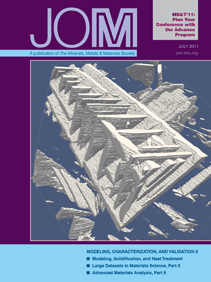 |
TMS ONLINE | TMS PUBLICATIONS | SITE MAP JOM Material Matters Articles in Full-Text Format: May 2006 |
Exploring traditional, innovative, and revolutionary issues in the minerals, metals, and materials fields. |
|||||
| OUR LATEST ISSUE | |||||
VISIT THE JOM COVER GALLERY
|
The Role of Protective Orders in Intellectual Property LitigationArnold B. SilvermanSuppose you have valuable trade secrets which you feel have been misappropriated by another and you wish to sue to enjoin future disclosure and use of the trade secrets and to be compensated for the damage done. How do you go about accomplishing these objectives without risking the loss of confidentiality through disclosure of your trade secret to others? The answer is a protective order. In general, a protective order is an agreement between or among the parties providing details for identification of information that is deemed confidential by one party and is to be disclosed to the other party or parties. A protective order, which is in essence an agreement negotiated between or among the parties, with or without court input, and approved by the court, governs a wide variety of terms and conditions that apply to every phase of disclosure of a party’s confidential information in connection with the litigation and thereafter. In intellectual property cases, confidential information is frequently technical information or business information, such as financial data. Under the U.S. system of jurisprudence, “discovery” occurs early in litigation. Discovery permits one party to obtain information from the other party that is relevant to the case or likely to lead to relevant information. The information may be solicited by written interrogatories, requests for production of documents, and depositions wherein a witness under oath is required to respond orally to questions. Document production will be considered as an example of how a protective order is employed. Usually the one producing documents for the other side pursuant to a request for production under a protective order would mark those documents deemed to contain confidential information with an appropriate legend to indicate that to the recipient. It is not uncommon for there to be several levels of confidentiality such that a first document might be marked “confidential” and another might be marked “highly confidential.” The degree of confidentiality often determines the people to whom the document may be disclosed and the use and handling of the document. It is not uncommon for documents that have been identified as being highly confidential to be disclosed only to legal counsel. Other documents under a confidentiality restriction may have more broad disclosure. During the course of litigation, a large number of categories of people may have a reasonable need to have access to confidential information of another party. In addition to the judge or magistrate and others employed by the court, the group might include the parties, both in-house and outside lawyers as well as their assistants and employees, consultants of the parties, fact witnesses, expert witnesses, and others. The protective order may require that everyone who is to have access to confidential information sign a written agreement to adhere to the terms of the order. A protective order also normally sets forth restrictions and procedures for the handling and use of such information. It also sets forth exceptions to obligations of confidentiality. Typically, it requires that court-filed documents be placed in envelopes with suitable legends and sealed so that access cannot be obtained without obtaining the required approval. Also subject to restrictions is information presented orally in depositions and in court proceedings. The protective order also typically sets forth what is to be done with confidential documents and other items after the litigation has terminated. Inherent in the procedures involving application of protective orders is an obligation of the parties to act in good faith. One cannot simply mark everything as being confidential. If a party receiving information designated as confidential wishes to challenge that status, it may do so typically by initial conference with the opposing party and ultimately, if agreement is not obtained, through court intervention. The protective order is a valuable vehicle that enables parties to assert their claim to the fullest extent or to defend against a claim, while not being faced with the dilemma of either making unrestricted disclosure of its confidential information or withholding confidential information and thereby weakening its ability to assert its strongest case. Establishing a comprehensive protective order which effectively protects confidential information without meaningfully retarding the progress of the litigation can facilitate efficient pursuit of the litigation. Arnold B. Silverman is chair of the Intellectual
Property department and a member of Eckert
Seamans Cherin & Mellott, LLC in Pittsburgh,
Pennsylvania. |
Copyright © 2006 by The Minerals, Metals & Materials Society.
Direct questions about this or any other JOM page to jom@tms.org.
